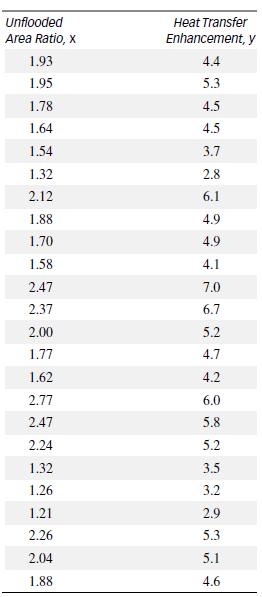Refer to the Journal of Heat Transfer (Aug. 1990) study of the relationship between the amount of
Question:
Refer to the Journal of Heat Transfer (Aug. 1990) study of the relationship between the amount of heat transferred in a copper tube and the area at the top of the tube that is not flooded by condensed vapor, Exercise 10.14. You used simple linear regression to predict the heat transfer enhancement ratio (y) from the unflooded area ratio (x). Conduct a residual analysis for this model that will provide insight into the validity of the standard regression assumptions on the random error, . Do you recommend any model modifications?
Data from Exercise 10.14
A study was conducted to model the thermal performance of integral-fin tubes used in the refrigeration and process industries (Journal of Heat Transfer, Aug. 1990). Twenty-four specially manufactured integral-fin tubes having rectangular shaped fins made of copper were used in the experiment. Vapor was released downward into each tube and the vapor-side heat transfer coefficient (based on the outside surface area of the tube) was measured. The dependent variable for the study is the heat transfer enhancement ratio y, defined as the ratio of the vapor-side coefficient of the fin tube to the vapor-side coefficient of a smooth tube evaluated at the same temperature. Theoretically, heat transfer will be related to the area at the top of the tube that is “unflooded” by condensation of the vapor. The data in the table are the unflooded area ratio (x) and heat transfer enhancement (y) values recorded for the 24 integral-fin tubes.

Step by Step Answer:

Statistics For Engineering And The Sciences
ISBN: 9781498728850
6th Edition
Authors: William M. Mendenhall, Terry L. Sincich





